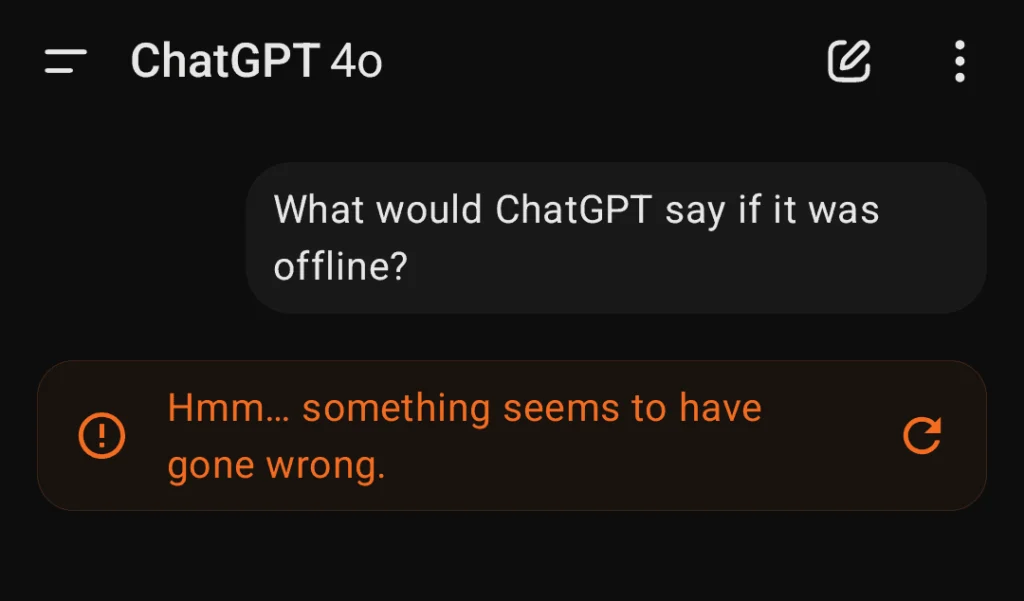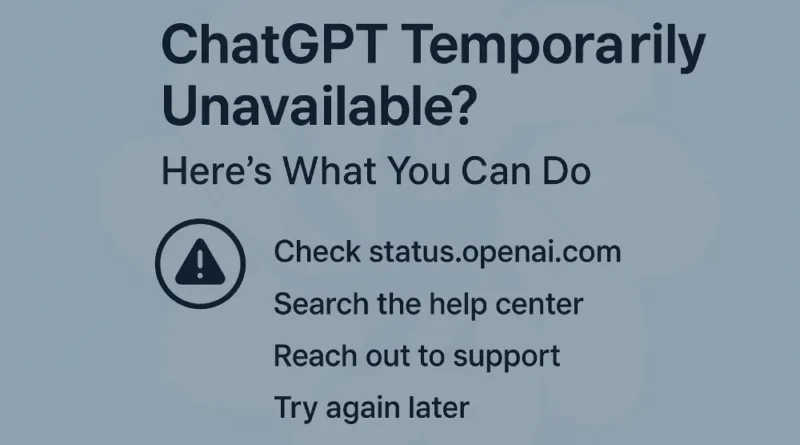ChatGPT Temporarily Unavailable? Here’s What You Can Do
Why ChatGPT Goes Down
What Happens During a Downtime?
Depending on the issue’s complexity, the downtime may last a few minutes to several hours.

How It Affects Users
- Workflow of professionals who write, code, or use analytics with GPT can be disrupted.
- Students who rely on it to assist in research or in doing assignments may miss valuable deadlines.
- Developers who have incorporated GPT in their applications may find their apps broken.
- Recreational users might miss having a daily companion or a productivity tool.
What to Do When ChatGPT Is Down
- Check the Status: For real-time updates, go to https://status.openai.com.
- Follow OpenAI on social media: People commonly use sites like Twitter and X to send out fast outage notices.
- Try Other Options: You might also use Microsoft Copilot, which leverages OpenAI technologies, or regular search engines.
- Work without the internet: Use a text editor to write drafts or outlines of your ideas so you can paste them into ChatGPT when it comes back.
Looking Ahead
Disclaimer
The information presented in this blog is derived from publicly available sources for general use, including any cited references. While we strive to mention credible sources whenever possible, Web Techneeq –Website Design Company in Mumbai does not guarantee the accuracy of the information provided in any way. This article is intended solely for general informational purposes. It should be understood that it does not constitute legal advice and does not aim to serve as such. If any individual(s) make decisions based on the information in this article without verifying the facts, we explicitly reject any liability that may arise as a result. We recommend that readers seek separate guidance regarding any specific information provided here.

